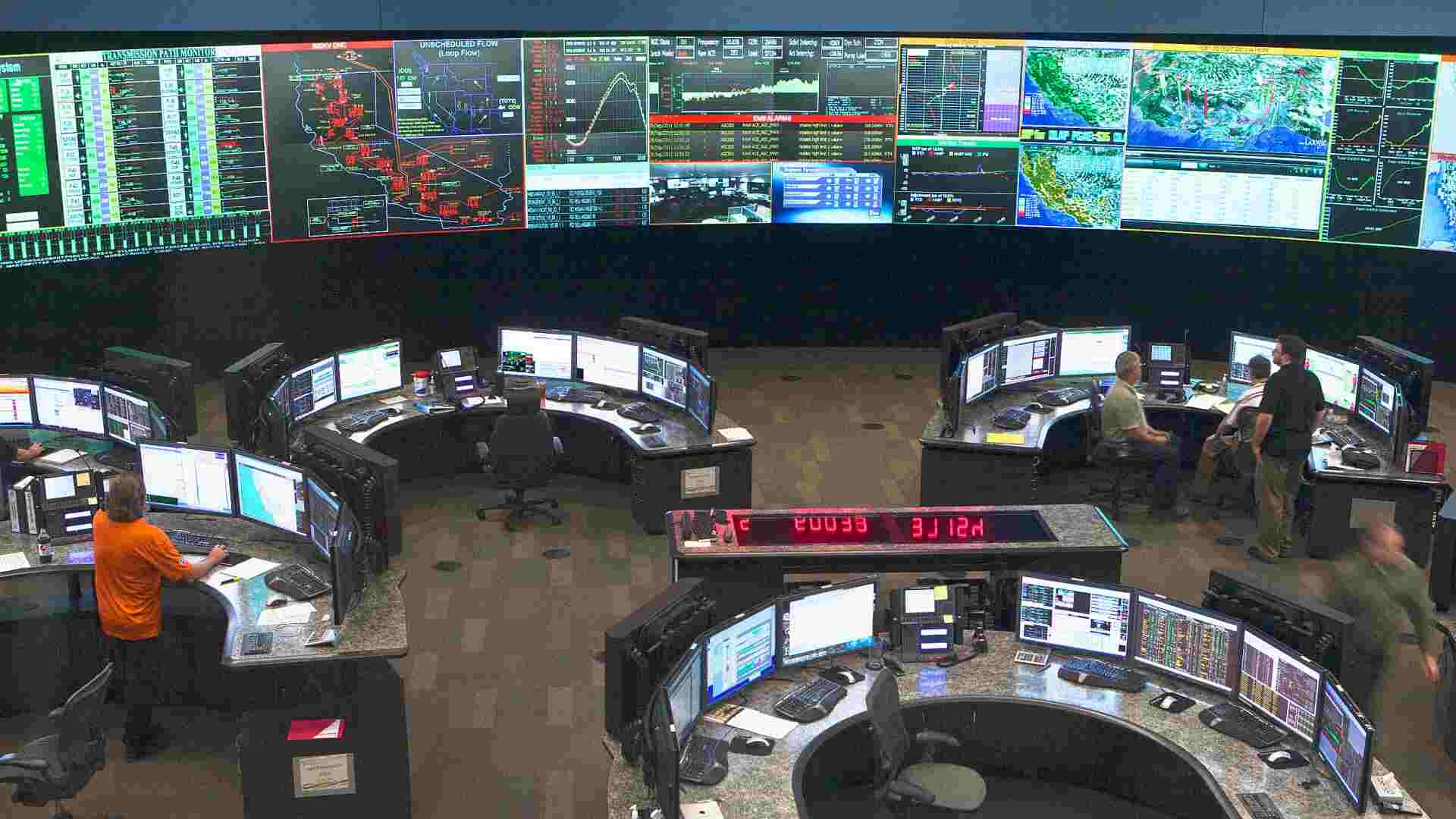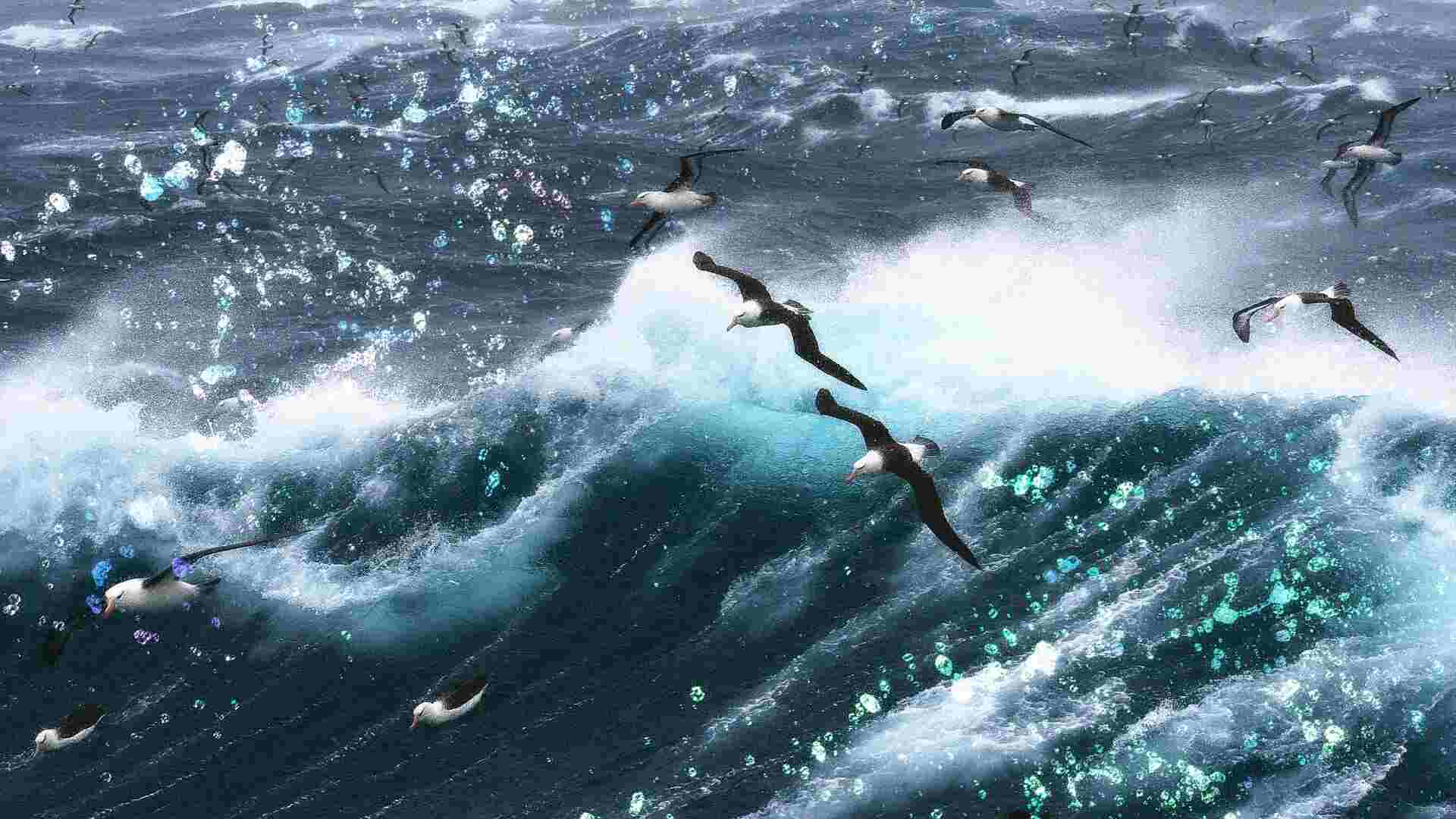- | 9:00 am
This giant, solar-powered sail can travel forever, and it’s the future of space exploration
A ‘solar sail’ sounds like something out of a sci-fi book, but NASA is making it a reality.

Over the last two decades, Les Johnson and his team of engineers have quietly been pushing NASA into a new era of space exploration while nobody was paying attention. As an engineer at the legendary Marshall Space Flight Center in Huntsville, Alabama—the birthplace of the Saturn V rocket that first took humans to the Moon—Johnson led the complex design of a 17,780-square-foot sail that will push spaceships across the solar system without using a single ounce of fuel.
Called a “solar sail,” the silvery sheet of fabric is 32 times thinner than a human hair and stretches the size of three basketball courts. Over a recent Zoom call, Johnson says the sheet of fabric works much like a sail used for boats—if a boat sail were designed for high-speed space travel. “Just as a sailboat uses the wind to push it through the water, solar sails use the pressure of sunlight to push them through space,” Johnson says.
This seemingly impossible feat is, in fact, not impossible at all. Avi Loeb, an astrophysicist and Director of the Institute for Theory and Computation at the Center for Astrophysics at Harvard University, says solar sails represent one of the most promising technologies for future space exploration. They offer a sustainable and efficient way to navigate the cosmos, with the potential to propel spacecraft to unprecedented speeds and distances.
“A solar sail technology…can substitute rockets in propelling payloads to desired destinations in space,” says Loeb. “Reflection of sunlight pushes a thin membrane, just as the sail on a boat is pushed by reflecting air flow. The push is most effective close to the Sun [so] the solar sail technology is particularly useful for missions to study the Sun, Venus or Mercury.”
A KID’S DREAM
By the time Johnson was a teenager attending Coles Middle School in Ashland, Kentucky, he already knew he wanted to become a NASA scientist. Like many of the engineers who work in NASA labs across the United States, Johnson has always been a proud science fiction nerd. In high school he became obsessed with the idea of laser sails after reading the novel The Mote in God’s Eye written by Jerry Pournelle and Larry Niven in 1974, which describes a sail that uses photons as a thrust force to move a spaceship over vast distances at extremely high speeds. “I thought the idea of laser-driven lightsails was amazing, but I never dreamed I would get to work on anything like that,” he says.
The book wasn’t the first time someone thought light had the potential to propel a spacecraft at incredibly fast speeds with no fuel whatsoever. The idea of using solar light to push a sail was initially mentioned by Jules Verne in his seminal From the Earth to the Moon and further detailed by Arthur C. Clarke—the author of 2001: A Space Odyssey—in his short story “Sunjammer.”
But it was Pournelle and Niven’s tale of a sailing alien spaceship propelled by laser beams that inspired Johnson to become an engineer, get into NASA, and eventually win the space agency’s Science Mission Directorate open competition to finance the project. “I had an opportunity to get involved in a project that was looking at different types of propulsion, and this is one that I added to the mix to consider,” he says. “Now the technology is here—we can build these things. And that’s been on again, off again part of what I’ve worked on for the last 20 years.”
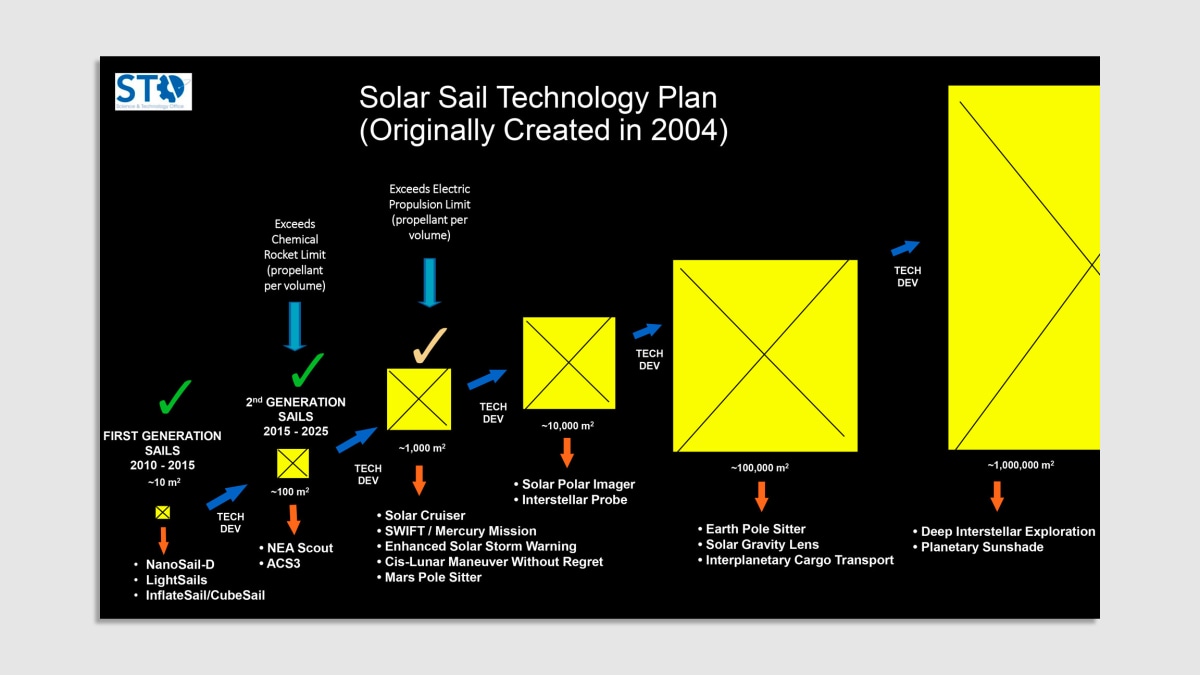
Johnson recalls writing down his first solar sail development roadmap around 2005 or 2006. Since then, his team has been chipping away at the roadmap, one advance at a time. “I am pleased to say that we’ve been following it, but not at the pace I originally envisioned,” he says.
NASA has been steadily increasing the size and complexity of its sails. It tested the first generation of solar sail in space—a 106-square-foot sail—in 2010. Then working with The Planetary Society, it launched a slightly bigger version—the 344-square-foot LightSails 1 and 2—in 2015 and 2019, respectively. In the mid-2010s NASA developed a second-generation solar sail with the NEA (Near-Earth Asteroid) Scout that stretches 925 square-feet and was launched in 2022. This year, it will launch a slightly smaller version called the ACS3 into space.
Now, NASA has completed a third generation called Solar Cruiser that reaches 17,790 square feet and it can be scaled up all the way up to 54,000 square feet. This generation has now reached “Technological Readiness Level 6,” the most important milestone for any project developed at the agency. It is essentially a green light that indicates the solar sail is reliable enough to be used on a real space mission.
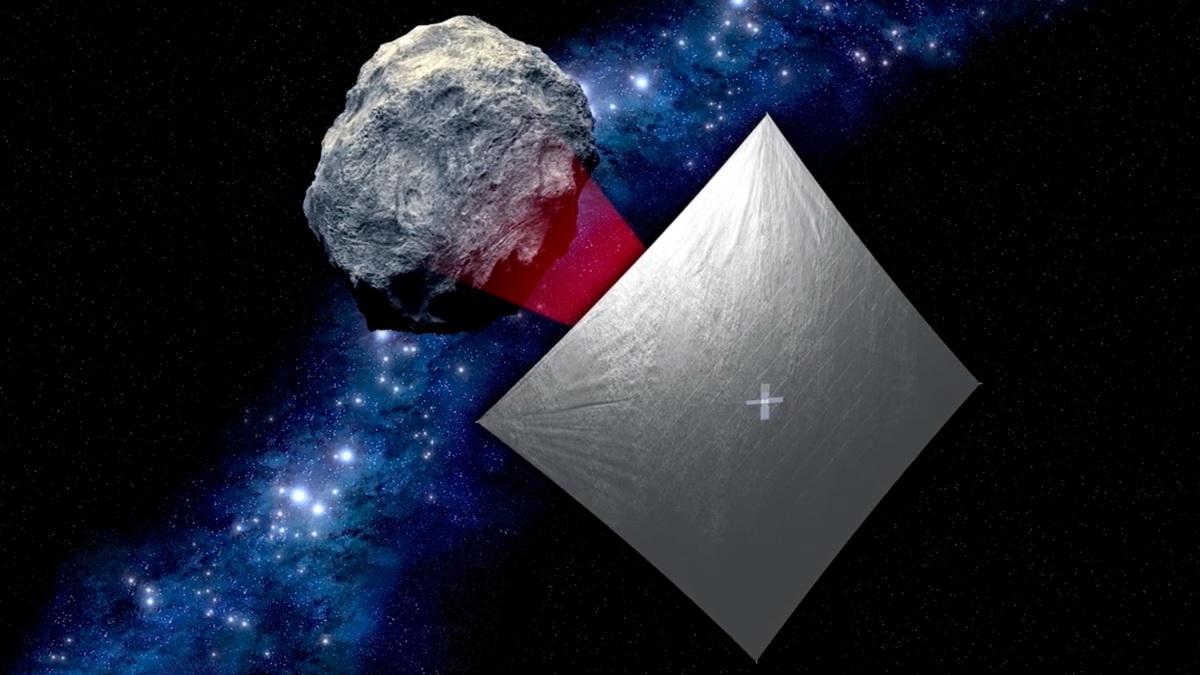
NO FUEL NEEDED
Unlike current chemical rockets—which burn fuel to escape Earth’s gravity—or ion engines—which use electrical fields to turn a noble gas like xenon into a steady stream of electrons that push a ship through the vacuum of space—solar sails don’t require any fuel at all. They only need sunlight to work.
This sunlight exerts gentle but powerful pressure on the sails. As the photon impacts build up in the sail’s ultrathin material, the spacecraft gradually builds up enough power and speed to move a payload in space. This payload is the actual starship, full of scientific instruments that vary depending on the scope of the mission.
This simple fact makes them ideal for extremely long missions. As Johnson puts it: “You could visit potentially multiple asteroids and never run out of fuel. You just keep going till the spaceship breaks down.” Right now, this type of mission is impossible, as deep space probes like Voyager or New Horizons depend on a complex billiard play of orbital physics that lets it reach a predetermined number of targets on their way out of the solar system.
While a typical space probe has a very limited amount of fuel to slightly adjust their trajectory, their speed is the result of the inertia from the rocket launch and the orbital equations that accelerate the ship as they jump from planet to planet (the gravity of each planet or moon acts as a ‘slingshot’ that further accelerates the ship). That’s why they follow a predetermined trajectory that you can’t really change on the fly. A solar sail space probe, on the other hand, can go on forever because it has no fuel, so it is inherently infinitely more sustainable and efficient since it only requires sunlight to move.
NASA’S HARDEST DESIGN CHALLENGE
Johnson’s enthusiasm for this project is palpable when speaking with him. Solar sails are not just a new way of moving spacecraft, but a paradigm shift in the way we think about space travel. Still, they come with plenty of challenges.
When Johnson and his team began to design the first space sail, they encountered many problems that they expected. Surprisingly, he tells me, these were relatively easy to solve at the technological level.The first was the material that makes the sail.
“Solar sails require materials that are not only highly reflective, but also incredibly light and durable,” explains Johnson. “At 1 astronomical unit (the distance between the Sun and Earth) from the Sun, there’s a fixed amount of sunlight that falls on the sail.” The bigger the sail, the more photons it captures, and the more thrust you get to move a bigger mass. That’s why it is so important to maintain a delicate balance between the robustness of the material and its final mass. If the material is too thick, the sail will weigh too much. And this higher weight significantly decreases the load capacity of the spaceship.
The material also needs to be compressed into a package small enough to fit in the fairing of the rocket that will take the solar sail ship to space, where it expands thanks to a system of booms that unfolds the sail into its final square shape, just like sails are unfolded across a mast. So flexibility is key for the material too.
They found the solution from Nexolve, the same company that manufactures the solar shield for the James Webb telescope. In fact, the sail’s material is very similar. The film is made from resin and then adhered on top of a thicker film called a backer. It’s produced in 60-inch wide rolls which are seamed together to make large areas using a proprietary resin bonding process, as Brandon Farmer, director of advanced materials at Nexsolve, tells me over email.
“No adhesives are used in the process.” Other features are added to the film during sail manufacturing including rip-stops, edge reinforcements, electrical jumpers, and reinforced corners so it is structurally sound. Finally, the film is trimmed to the desired shape and the backer is removed leaving the 2.5-micron thick sail. “The sail is then z-folded, like a paper fan, resulting in a long narrow folded sail,” Farmer says. “For packaging, the sail is typically wrapped around a spool and secured to the spool.”
Which takes us to the second problem. “One of the biggest challenges was designing a deployment mechanism that was both reliable and lightweight,” Johnson says. The extended sail cannot be launched into space, hence the spool that is attached to the spaceship and then packed together in the rocket fairing, the metal pod at the top of the rocket that encapsulates the probe.
NASA worked with Redwire—the sail’s prime contractor—to develop a system of 100-foot-booms and deployment mechanisms. After reaching orbit, the boom mechanism gets activated, pulling the sail off of the spool and tensioning it into its final square shape.
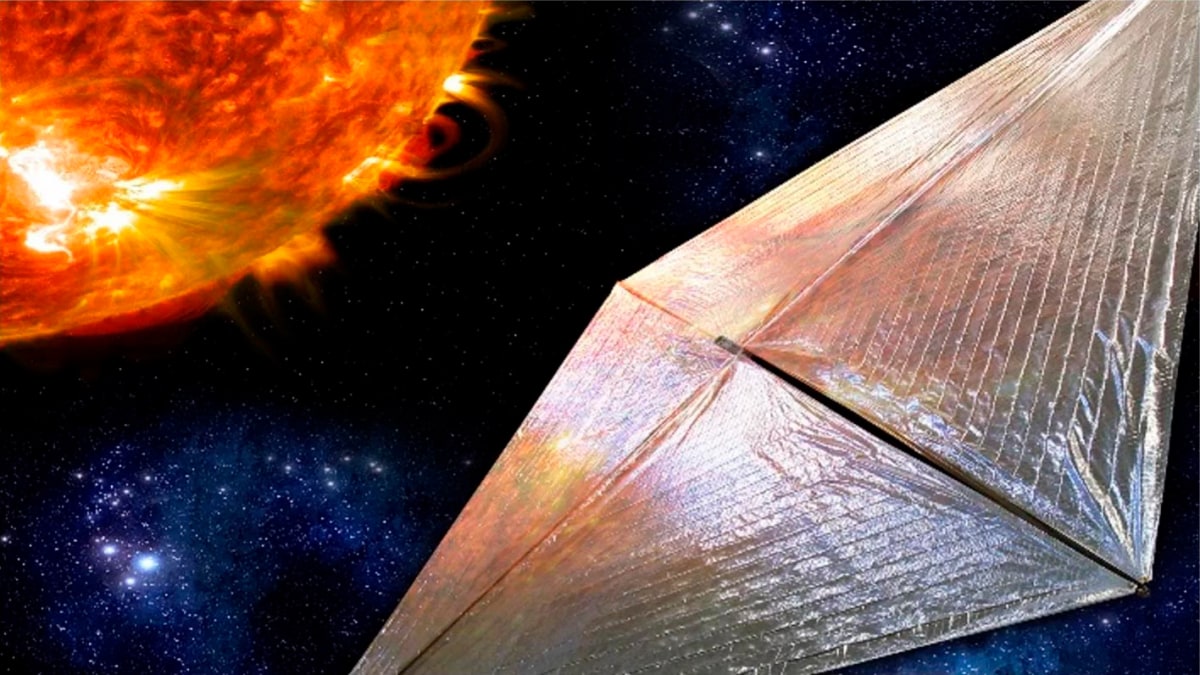
LIKE PILOTING A SAILBOAT, SORT OF
“The big challenge was not what I thought it would be when I started working on it,” Johnson says. “The hard part is controlling the sail and steering it. And the reason for that is, when the sail is deployed, the acceleration never stops as long as there’s light. Unlike a rocket, which can turn off your rocket engine when it’s pointing in the right direction and just coast.”
Maintaining proper guidance and control of the ship was an extremely difficult problem to work out. So was the problem of keeping it perfectly flat while maneuvering. “If the shape is not what you predicted, then you might get a little bit more pressure on one side of the sail than the other,” he says. “And over time, that could cause your sail to flip over.”
Like any other flying vehicle, you need a system to pitch (control of direction up or down, the x axis), yaw (control of direction left or right, the y axis), and roll (rotating on the ship’s z axis) to maneuver in three-dimensional space. Achieving pitch and yaw control was the easier part of this problem.
The engineers realized that they needed to look at the entire mass of the ship and the sail. They figured out that they need to change the center of mass of the entire vehicle by moving the spaceship in relation to the solar sail, like a motorcyclist will change the center of mass by moving the body in relation to the bike.
In their system, the spaceship is connected to the sail using cables, which are threaded through a special system so they don’t tangle, Johnson explains. “There is a motor that drives essentially a screw that moves the ship back and forth relative to the sail [or vice versa, depending on your point of view]. You just mechanically move the sail top to bottom, left to right, until you balance the forces.” Ground operators—or, theoretically, a built-in navigation algorithm that works like an automated pilot—only needs to order the mechanism to move it a tiny bit for the entire vehicle to move into any desired direction.
Rolling, however, is an entire different ballgame. In regular space vehicles, this is done using tiny rockets that fire to rotate the ship, then stop. But that would be impossible for the sail. You just can’t afford the weight of those engines in the spaceship, and that won’t work to move the sail anyway.
The key to achieve this was to control how many photons the sail reflects. “We developed these things called reflective control devices,” Johnson says. Basically, these are little thin films that you put in the fabric of the sail. Roughly speaking, these are similar to liquid crystal displays: when you apply a little bit of voltage to them, they lower their reflectivity.
The regular sail is extremely reflective, which gives it full thrust. This patch lowers the thrust as it lowers its reflectivity. Over time, that causes the ship to roll in the desired direction. Once it’s moving in the right direction, the ship can increase reflectivity to stop the rolling. The change is almost imperceptible to the eye, but the difference in the amount of reflected photons is enough to control the spin.
Essentially, NASA can steer its solar sail ships much like a pilot can steer a sailboat.
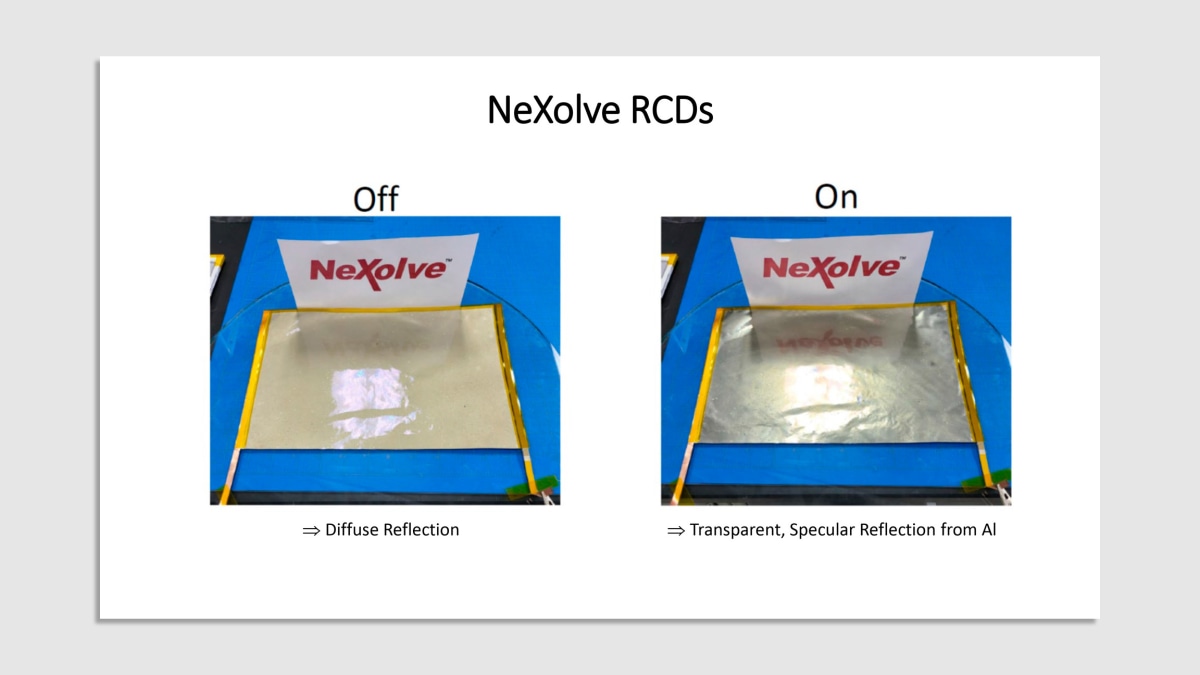
IT’S SHOWTIME
With all these problems solved, it was time to build the third generation solar sail. NASA tapped Nexolve and Redwire to begin building and assembling the huge sail in Huntsville, Alabama. Once everything was in place, it was time to test: “It wasn’t just the deployment that we tested. There’s a lot of work that went to reach NASA’s technology readiness level milestones,” Johnson says.
Any technology at the space agency needs to go through a rigorous testing sequence designed basically to try to make it fail and make sure that it is ready for the harsh environment of launching in a rocket and operating in space.
This included testing for resistance to the intense acceleration, vibration, and changes in atmospheric pressure during ascent in a rocket, which vibrates like a dozen elephants dancing on a steel sheet. The sail was also subjected to a transition from ground atmospheric pressure to a vacuum within eight minutes. Its design incorporated pathways to prevent the sail from inflating like a balloon under these conditions—a test that passed with flying colors, according to Johsnon.
The sail’s hardware underwent thermal cycling tests to simulate the extreme temperature variations between full sunlight and complete darkness. Further, the materials used in the sail were tested against a decade’s worth of exposure to the harsh radiation conditions of deep space, including ultraviolet light from the sun and solar particles. These tests confirmed the materials’ durability and performance, indicating they would not degrade over time.
NASA even tested for the impact of micrometeorites—thousands of them. Space is full of microscopic particles that travel at several times the speed of sound. “If they hit a coffee mug, they will blow it up like a bullet,” Johnson says. “But the sail is so thin that they would not cause any significant damage to the sail.” (The sail is so thin that it presents no resistance to the impact of a micro-meteorite. Since there’s no resistance, it doesn’t liberate any force from the impactor.)
Following testing, the sail was finally packed and deployed. The deployment was successful, and all tests yielded positive results without significant issues. This rigorous testing process got the TLR6 seal of approval, meeting the requirements for application in scientific missions rather than just technological demonstrations. This readiness level assures that the sail technology is mature enough for use in actual space missions, allowing scientists to focus on the mission’s scientific objectives without concerns about the sail’s viability for flight.
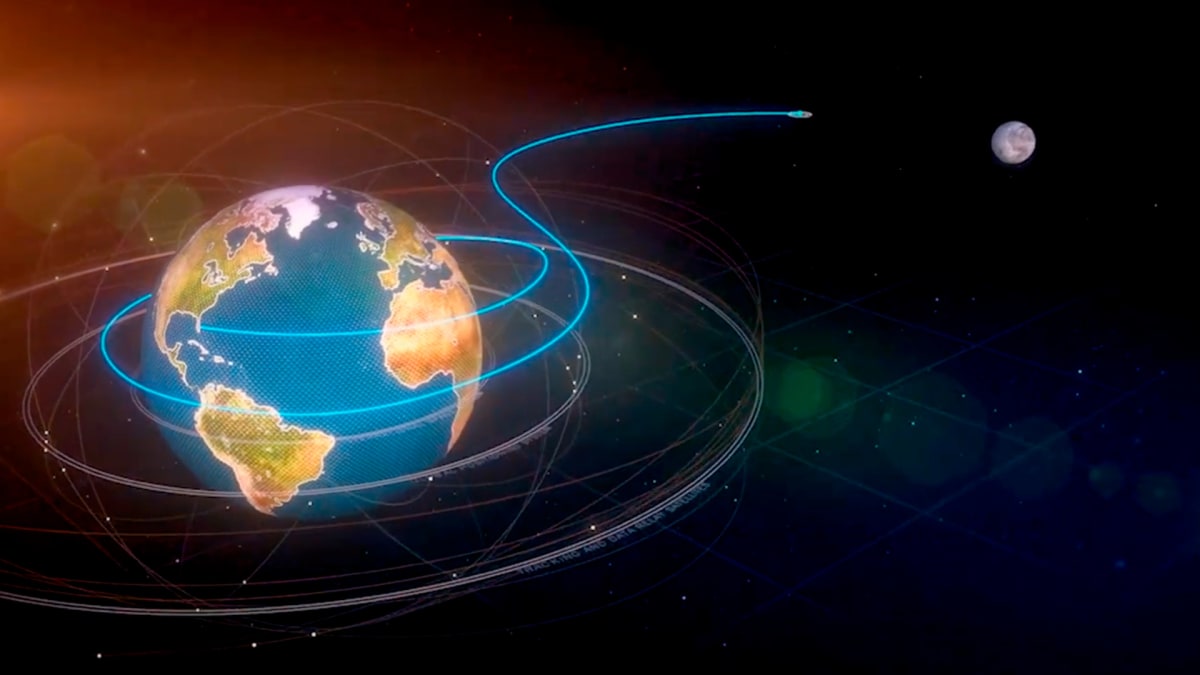
Now Johnson is eager to see the 17,790 square-foot sail in action. The success of this test is not only a technical achievement. It is a gateway to the future of space exploration. “The technology can revolutionize our approach to exploring the solar system,” he says “It’s a beautiful application of physics.”
Johnson’s team has already received calls from NASA’s science teams to incorporate the sail in future missions. After a team chooses the sail, there is a long time from writing a proposal to flight and submitting for approval. “If they’re successful, and let’s say they win the solicitation [for NASA to fund their project] whenever it comes out in two years, it’ll be three years after that, before the system is built,” he says. “So the first real mission with this is a minimum of five years away.”
The first mission might be a crucial one for civilization. The solar sail development was mainly funded by a division of NASA’s Science Mission Directorate called the heliophysics group and by NOAA, the National Oceanic and Atmospheric Administration. These two organizations watch the sun’s activity to issue solar storm warnings.
Like, the first mission’s goal will be to send a spaceship to a static point in space beyond the Lagrange 1, a dead zone of space where spaceships can get parked because the gravity fields of the sun and Earth cancel each other. Using the sail to compensate for the sun’s gravity (which pulls in as the sail pulls out), they can study our star closer and, if successful, that will increase our warning time in case of a solar storm.
Intense solar storms can be damaging, as demonstrated by the Carrington Event that destroyed telegraph and electric systems at a global level in 1856. “It would enable us to increase the warning times for solar storms by up to 50%, which is huge,” Johnson says. That may save our computers and satellites, because that time will give us time to turn things off before the electromagnetic apocalypse reaches us.
He also told me that there is interest among planetary scientists in using solar sails for missions to Mercury, Venus and various asteroids.
A BRIGHT FUTURE AMONGST THE STARS
Johnson was hesitant to talk about what could be achieved with solar sails in the distant future, but he anticipates that sails will be used to reach Proxima Centauri within a human lifetime. Proxima is the nearest star system to Earth but, at 4.2465 light-years, it will take an interstellar probe like Voyager 76,000 years to get there, about 2,500 human generations.
This can’t be achieved by a solar sail, but it can by a laser sail, which Loeb says “could take us to another star system at a considerable fraction of the speed of light.”
As spacecraft moves away from the Sun, the star’s light gets too weak to propel a ship. But, if you point a high power laser at it, you can accelerate your ship to relativistic speeds. This means a significant fraction of the speed of light, a percentage of the speed of light big enough for the effect of that speed to be appreciated by the observer. In this case, to reach Proxima in a human generation, we need to travel at about 4.2% of the speed of light.
Right now we have too many technological limitations, such as the lack of high-power laser systems in orbit or the right material to sustain the intensity of the laser, says Loeb, of Harvard. “We could also push a sail with a powerful laser beam, collimated on the sail, but that requires much more effort and funding.” The astrophysicist believes that we have practical choices for the sail composition and shape, but challenges remain in the context of the laser engine as well as communication from interstellar distances.
Johnson agrees. “There are no plans to do this. This is all speculation, now. But we’re thinking about it in the future. You might be able to do this. You could put big lasers and accelerate the sail to really high speeds,” he says. “I’ve done some calculations that show that there are materials like graphene and other engineered materials that can sustain the loads of a high power laser that’s potentially millions of watts or higher in power, which we don’t know how to build yet.”
But it seems the idea is solid and it is only a matter of time and money, of advances in materials science and engineering, to make it real. “I see this as the way we might eventually be able to do that,” he tells me. ”There’s no reason from a physics point of view that it shouldn’t work.” But first we need for his current design to fly in the inner solar system. And then, hopefully in less than a decade so I can see it launch, let soar into the stars and find the real mote in God’s eye.












